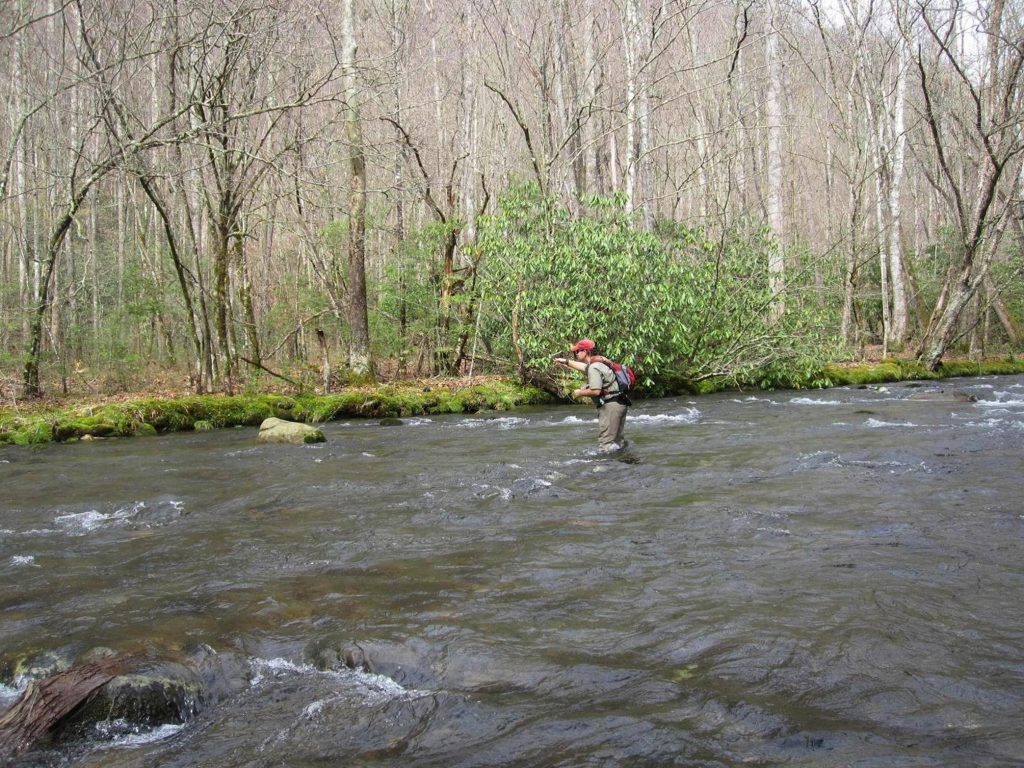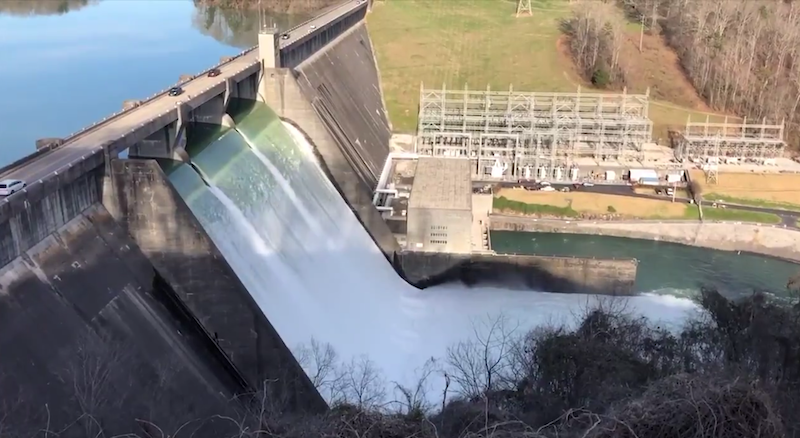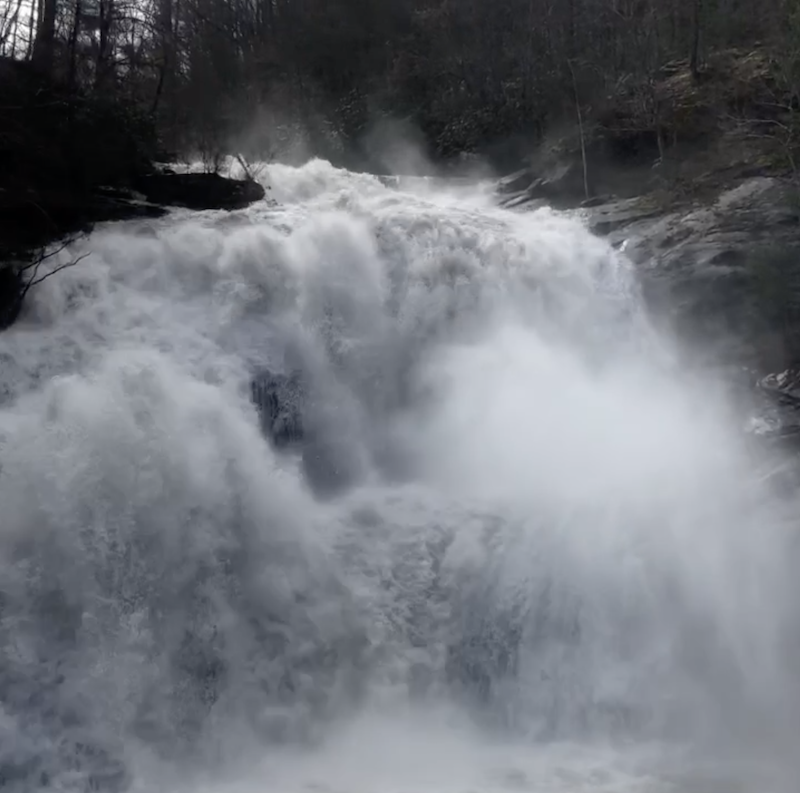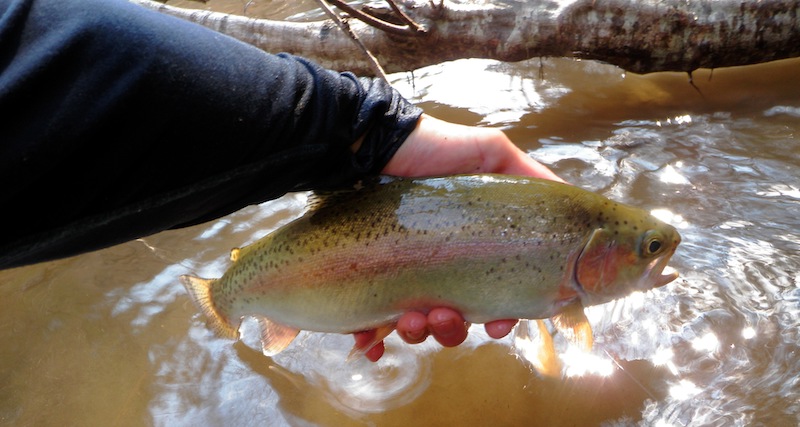Most of the time when trout fishing with dry flies or nymphs, you try to achieve a drag-free drift. This is also known as a dead drift. Essentially, what this means is you try to make your fly drift at the same speed as the current. That would be simple if the fly was drifting independently down the river. But it’s not. It’s attached to your line. Consequently, line management is a vital skill when it comes to fly fishing success and mending line is a big part of that skill set.
If your leader, or especially your fly line, is in a different current speed than the fly, it will pull or stop the fly when the line tightens. The term we use for this is drag. If your fly is dragging, you won’t catch many trout because it doesn’t look natural. Not only will the trout typically refuse to eat your fly when it has drag, they will often spook. This is especially true when you repeatedly drag a fly over a fish.
When you’re fishing small creeks and/or pocket water, you can often get closer to the fish because the broken currents help conceal you. In those instances, you can usually prevent drag by just keeping most of the line off the water. The less line on the water, the less there is to pull the fly.
But in slower pools or in bigger, deeper water, you may not be able to get as close to the fish. This forces you to make longer casts. As a result, you’ll have more line on the water. The more line you have on the water, the more currents you’ll have pulling it at different speeds.

When possible, I like to cast mostly upstream when I’m fishing bigger water. This allows me to stay behind the fish and it puts my fly and line more in the same speed of current. When the fly and line are in the same current speed, line management is much simpler. You mainly just have to strip the slack in as it drift back to you.
However, sometimes a particular run won’t allow for a practical upstream cast. It could be that the depth of the water won’t allow you to get in the proper position. Or maybe it’s a slick with really spooky fish and you’re concerned about casting your line across them. You may decide to get above them and cast downstream.
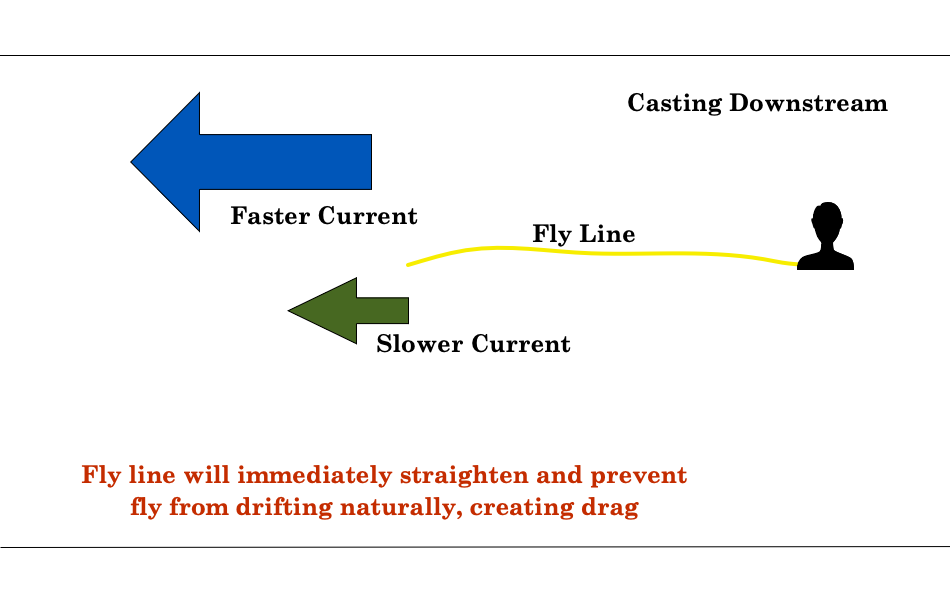
You have to be careful with this approach because you’re moving into their direct line of sight, and anything you stir up while wading will drift down to them. Excessive debris or a big mud cloud will send them running. The other challenge casting downstream is the drift.
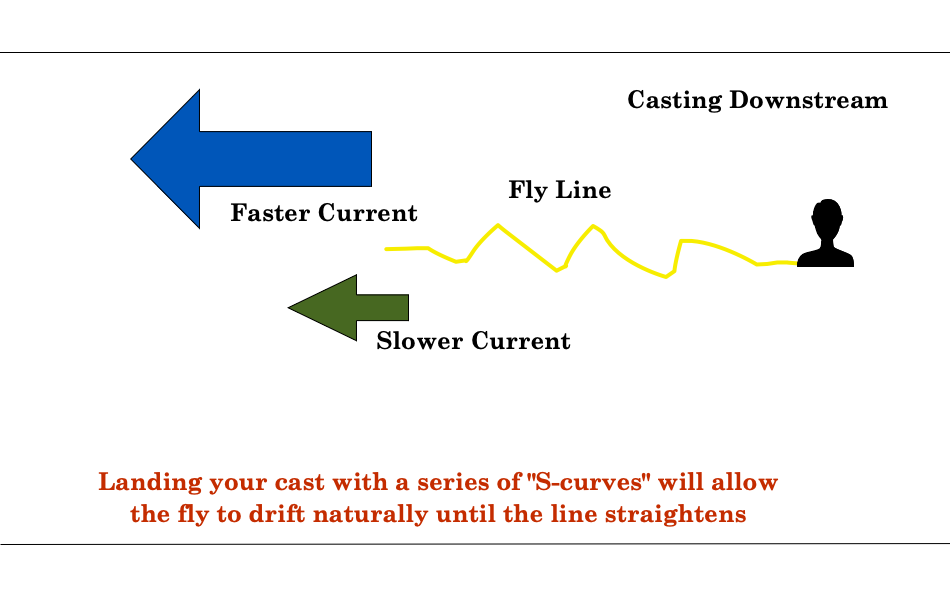
If you make a straight, fully extended cast downstream, your fly will start to drag almost immediately because the tight line will prevent the fly from going anywhere. It just drags in the water. I see a lot of people try to feed line at this point. But if the line is tight from the start, you’re just feeding a dragging fly. The trick is to land your cast with slack in the line. Using something like a pile cast will allow the line to land with little s-curves in it. You’ll be able to achieve a good dead drift while the s-curves straighten out. And if you want it to drift farther, feed line while you have those s-curves to get a nice, long drag-free drift.
The big challenge is when you have to make a longer cast across the river. It’s something I avoid if I can, but often, especially on large rivers, you have no choice. Casting across the river will almost always put your line and fly in different current speeds. And the longer the cast, the more different current speeds your likely to find.
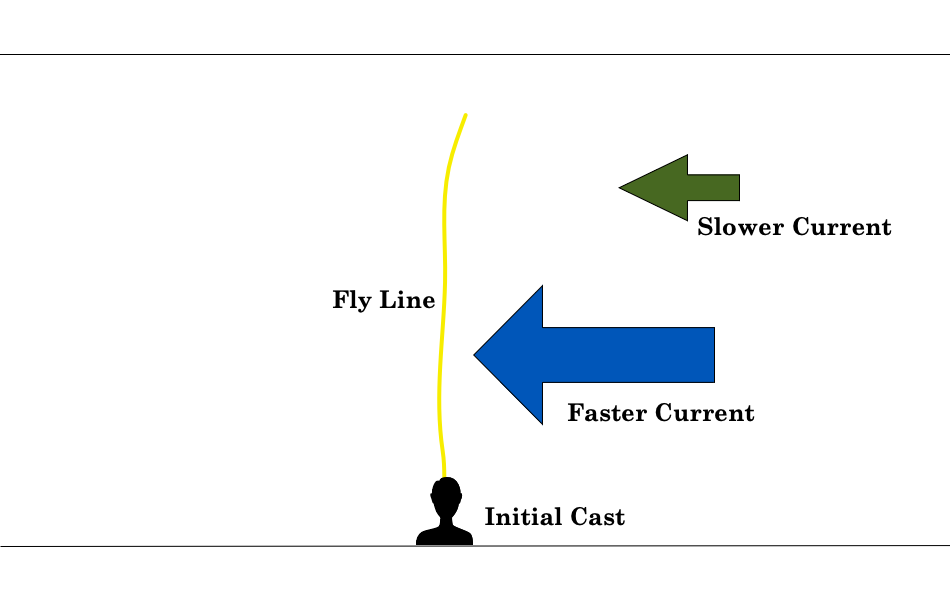
So, let’s say you have a nice, slow current on the other side of a wide run. There’s a fast current between you and the slow current. When you cast your fly into the slow current, your line will lay across the fast the current. Consequently, the fast current pulls the line, the line pulls the fly and you have drag. This is a scenario when you need to mend line.

Mending line means that I am going to manipulate the line in such a way that I put it upstream of the fly. By the time the faster current moves the line past the fly, the fly has had an opportunity to naturally drift through the target area. You can make this mend during the cast with what’s called a reach cast. This is known as an aerial mend. Or you can make the mend after the cast has landed by using the rod to flip the belly of the line upstream. Sometimes, longer casts or longer drifts may require you to do both. Longer drifts may also require you to make multiple mends.
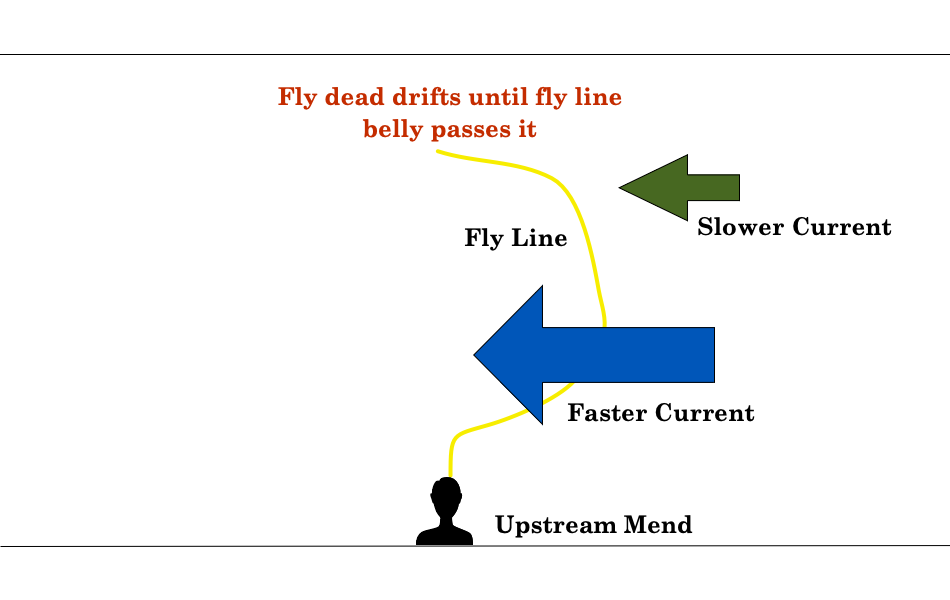
Let’s pose a similar scenario, but this time you’re casting across a slower current and the fly is landing in a faster current. Consequently, the fly will move ahead of the line, tighten and swing (drag) out of the drift lane. In this situation, you want the line downstream of the fly to give the fly time to drift before it overtakes the line. You would use a downstream mend. Like before, this could be achieved with a reach cast and/or by flipping the line downstream after it’s on the water.
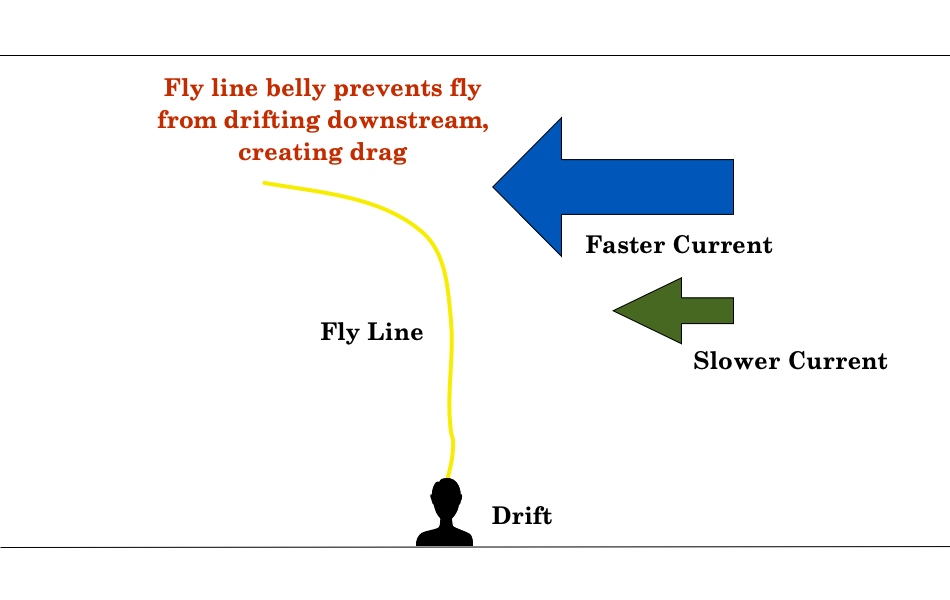
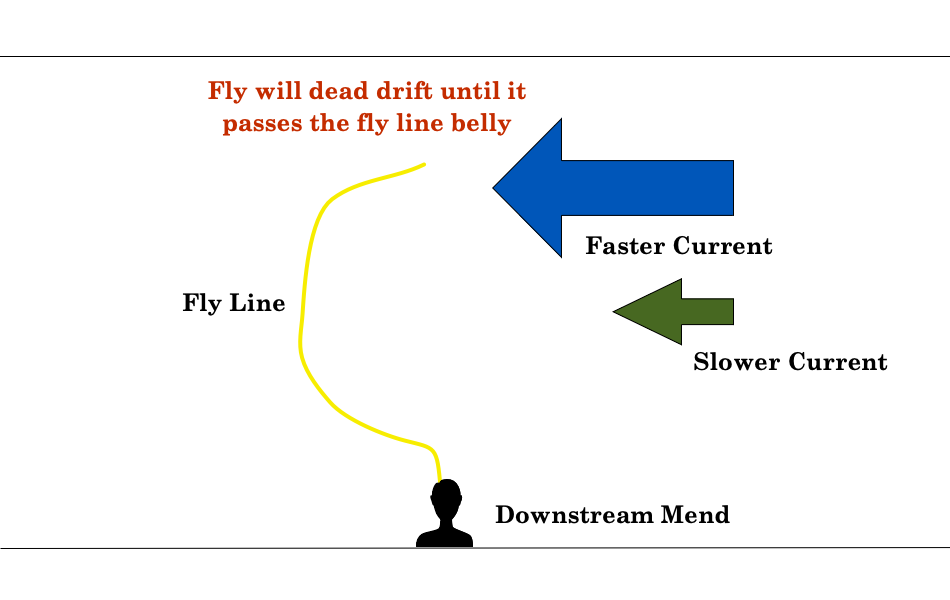
Mending is not easy and requires some practice because a lot of it has to do with anticipation and timing. If you wait until the fly starts to drag before you mend, you’ll move the fly out of the drift lane. You need to anticipate that the fly will drag and make your mend before, while you still have slack. This will disrupt the fly’s drift very little, if at all. Again, it will just take some practice.
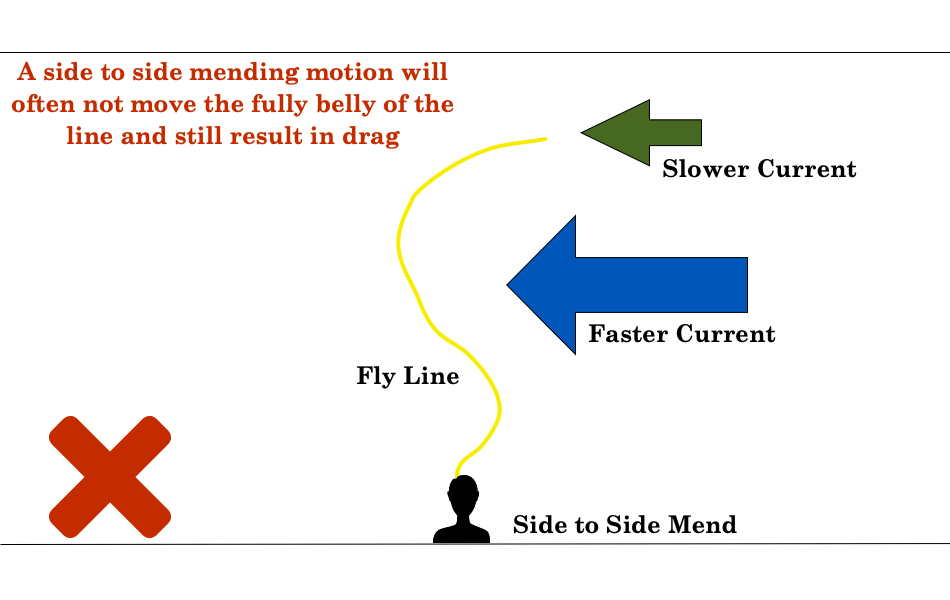
The other big key is how you mend the line. I see a lot of people keep the rod on a level plane and make a side-to-side motion to mend the line. As a result, the line pulls through the water and drags the fly. Instead, point your rod down and toward the line you want to move and make a sweeping, semi-circle motion to move the line. The idea is to essentially pick the line up and place it in a different position… without moving the fly.
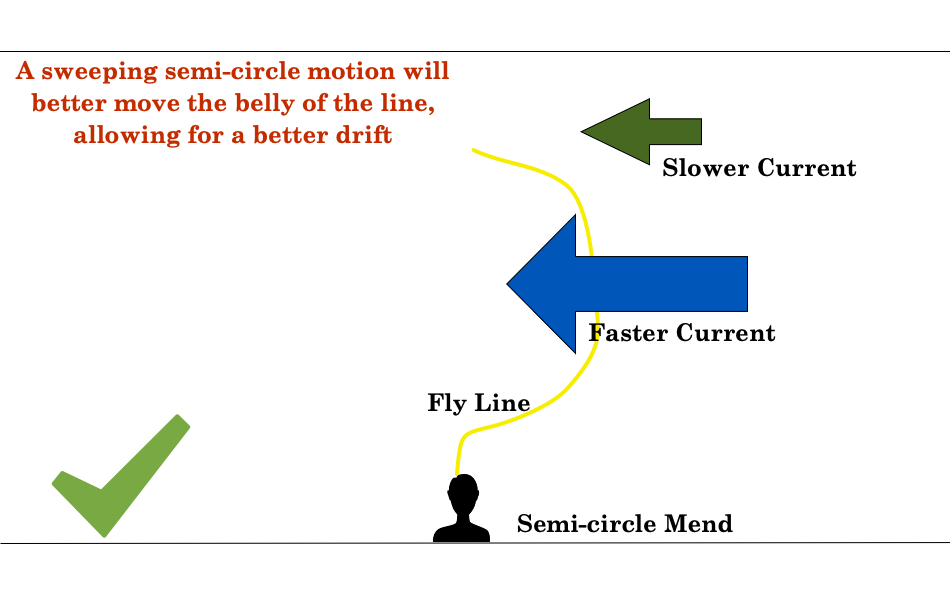
How much line you have to move will determine how big of a semi-circle you make. For instance, a big mend with a short line will likely pick the line and the fly up off the water. You don’t want that. A small mend with a long line likely won’t pick up the entire line belly, and you’ll still have drag.
As I mentioned before, it will take some practice. But it is an essential skill when drifting dry flies or nymphs to trout, especially on bigger water. Keep messing with it and before you know it, it will be second nature.


